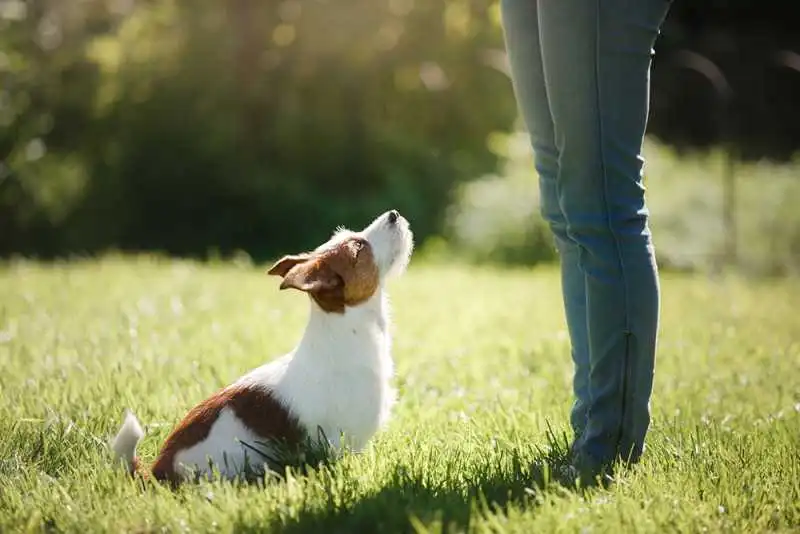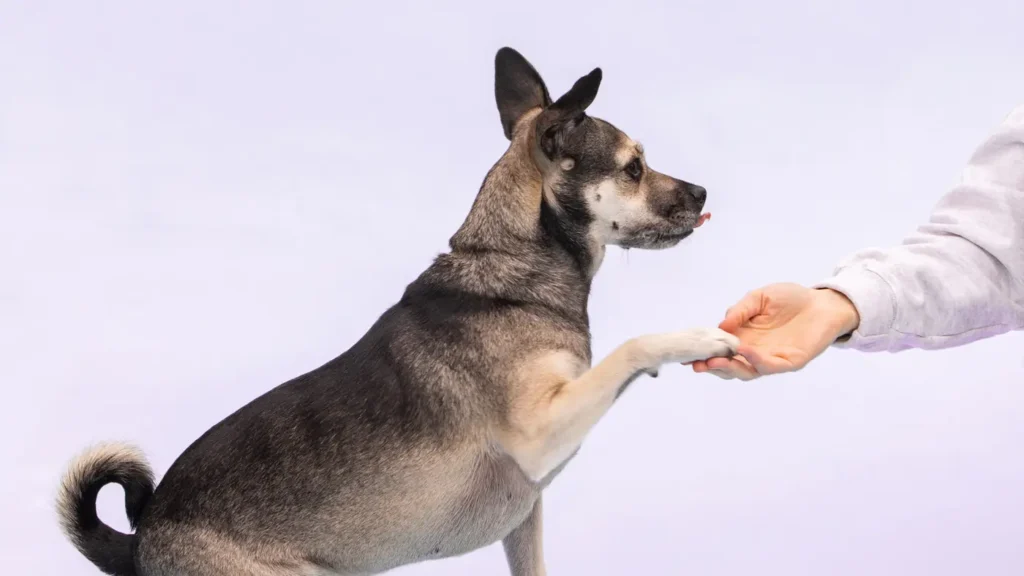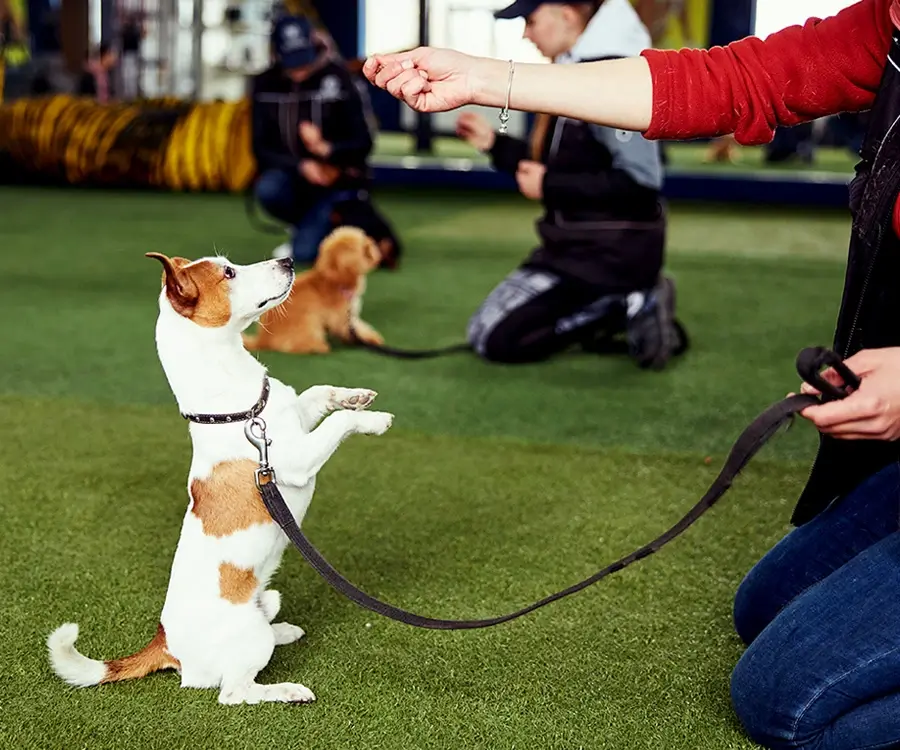
What are the 7 Obedience Commands for Dogs
Dog training is an essential aspect of responsible pet ownership. It not only helps establish a strong bond between you and your furry companion but also ensures their safety, enhances their behavior, and promotes a harmonious coexistence with your family and the community. Training your dog provides mental stimulation, builds their confidence, and helps prevent behavioral issues that may arise from lack of guidance. Among the various commands that dogs should learn, there are seven essential commands that form the foundation of obedience training.
In this article, we will answer the question of what are the 7 obedience commands for dogs that every dog owner should teach their furry friend. These commands are Sit, Down, Stay, Come, Heel, Off, and No. Each command serves a specific purpose and contributes to a well-behaved and well-rounded dog. By understanding the importance of these commands and learning how to train your dog for each of them, you will be equipped with the necessary tools to establish control, ensure safety, and foster a positive relationship with your canine companion. So, let’s dive into the world of dog training and discover how to master these essential commands.
Sit Command

The sit command is one of the fundamental commands that every dog should learn. It serves multiple purposes and offers several benefits for both the dog and the owner. Teaching your dog to sit on command helps establish control and discipline, as well as promote good manners and obedience. Here are some key benefits of teaching the sit command:
How to Teach the Sit Command
Choosing a quiet and distraction-free environment: Start the training process in a quiet and familiar space where your dog can focus without being easily distracted. This could be a room in your house or a quiet corner of your backyard.
Using treats and positive reinforcement: Gather some small, tasty treats that your dog loves. Hold a treat close to their nose, then slowly move it upwards and slightly backward over their head. As their nose follows the treat, their bottom will naturally lower into a sitting position. Once they are in a sitting position, praise them and give them the treat as a reward.
Teaching the verbal and hand signal for sit: As you guide your dog into the sitting position, say the word “sit” in a clear and firm tone. This associates the verbal command with the action. Additionally, you can use a hand signal, such as raising your hand with an open palm, to reinforce the command visually.
Practicing and reinforcing the command: Repeat the process of guiding your dog into a sitting position while using the verbal command and hand signal. Gradually reduce the use of treats, but continue to praise and reward your dog with verbal praise, petting, or playtime. Practice the sit command in different locations and gradually introduce distractions to ensure your dog can perform the command reliably in various situations.
Down Command
The down command is a valuable command that provides numerous benefits for both dogs and their owners. Teaching your dog to lie down on command promotes calmness, impulse control, and overall obedience. Here are some key benefits of teaching the down command:
How to Teach the Down Command
Start in a quiet and familiar area: Begin the training process in a quiet and familiar space where your dog feels comfortable and can focus without distractions. This could be a room in your house or a designated training area.
Use treats and positive reinforcement: Hold a treat close to your dog’s nose and slowly lower it towards the ground. As your dog follows the treat, their body will naturally lower into a lying down position. Once they are in the down position, praise them and give them the treat as a reward.
Add the verbal cue: As your dog is lowering into the down position, say the word “down” in a clear and firm tone. This associates the verbal command with the action of lying down. Repeat this step consistently during training sessions.
Practice and reinforce: Repeat the process of guiding your dog into the down position while using the verbal command. Gradually reduce the use of treats, but continue to praise and reward your dog with verbal praise, petting, or playtime. Practice the down command in different locations and gradually introduce distractions to ensure your dog can perform the command reliably.
Stay Command

The stay command is a crucial command that provides safety, control, and convenience for both dogs and their owners. Teaching your dog to stay in one place until given permission helps prevent them from wandering off, bolting through doors, or approaching potential dangers. Here are some key benefits of teaching the stay command:
How to Teach the Stay Command
Start with a solid sit or down position: Before teaching the stay command, ensure that your dog has a solid understanding of the sit or down command. This will serve as the foundation for the stay command.
Gradually increase the duration: Begin by asking your dog to sit or lie down, then give the verbal command “stay” while using a hand signal, such as an open palm facing towards them. Start with a short duration, such as a few seconds, then gradually increase the time before releasing them.
Introduce distance and distractions: Once your dog can stay reliably for longer durations, start adding distance between you and your dog. Take a step back, then return to them and reward them for staying. Gradually increase the distance over time. Additionally, introduce mild distractions, such as tossing a toy nearby, to test their ability to maintain the stay command.
Reinforce the command with rewards: Throughout the training process, continue to reinforce the stay command with rewards. Praise your dog when they successfully stay, and offer treats or playtime as a reward. Consistency and positive reinforcement will help solidify their understanding of the command.
Come Command
The come command, also known as the recall command, is one of the most important commands you can teach your dog. It allows you to call your dog back to you, ensuring their safety, control, and the ability to enjoy off-leash activities. Here are some key benefits of teaching the come command:
How to Teach the Come Command
Use a long leash for control and safety: Begin training the come command in a controlled environment using a long leash. This provides you with control over your dog’s movements while allowing them some freedom to explore.
Start in a low-distraction environment: Begin in a quiet and familiar area with minimal distractions. Call your dog’s name followed by the command “come” in an enthusiastic and inviting tone. Use encouraging body language, such as crouching down and opening your arms, to entice them to come to you.
Use positive reinforcement and rewards: When your dog starts coming towards you, praise them enthusiastically. Reward them with treats, verbal praise, and affection when they reach you. This reinforces the positive association with the come command.
Gradually increase distance and distractions: As your dog becomes more reliable in coming when called, gradually increase the distance between you and your dog. Practice in different environments and gradually introduce distractions, such as other people or dogs, to ensure your dog can maintain focus and respond to the command.
Heel Command
The heel command is a valuable skill that allows you to have better control over your dog’s movements during walks. By teaching your dog to walk calmly and closely by your side, you can ensure a pleasant and controlled walking experience. Here are some key purposes and benefits of teaching the heel command:
How to Teach the Heel Command
Start in a quiet and familiar environment: Begin the training process in a calm and distraction-free area, such as your backyard or a quiet room in your house. This allows your dog to focus on the training without being overwhelmed by external stimuli.
Positioning and leash handling: Stand with your dog on your left side, holding the leash in your right hand. Keep the leash loose and relaxed, allowing for natural movement. This positioning allows for better communication and control.
Introduce the command: Use a clear and firm voice to give the command “Heel” as you start walking. You can also use a clicker to mark the desired behavior. It’s important to give the command before your dog starts to pull or move ahead.
Encourage your dog to stay by your side: As you walk, encourage your dog to stay close to your leg by using verbal cues and gentle leash guidance. Reward them with treats or praise when they maintain the desired position. Consistency and positive reinforcement are key.
Correct unwanted behavior: If your dog starts to pull or move ahead, gently stop and change direction, making a U-turn. This teaches your dog that pulling leads to a change in direction, which they may find less desirable. Consistency in correcting unwanted behavior is important for effective training.
Gradually introduce distractions: Once your dog understands the basic concept of heeling, gradually introduce distractions during your training sessions. Start with mild distractions, such as walking in a slightly busier area, and gradually progress to more challenging environments. This helps your dog generalize the command and maintain focus even in distracting situations.
Practice regularly: Consistency is crucial in training. Set aside regular training sessions to practice the heel command with your dog. Celebrate small victories and continue to reinforce the command consistently. With time and practice, your dog will become proficient in heeling.
Off/No Command

The off command is an essential command that teaches your dog to keep their paws off people, furniture, or any other objects. It helps establish boundaries, promotes good manners, and ensures the safety and comfort of both your dog and those around them. By teaching your dog the off command, you can prevent jumping, pawing, or any unwanted physical contact.
How to Teach the Off Command
Teaching the dog to keep paws off people or furniture
– Start by using a consistent verbal cue, such as “off” or “down.”
– When your dog attempts to jump or place their paws on you or furniture, calmly say the cue and gently remove their paws.
– Immediately reward your dog with praise and treats when they comply with the command.
– Repeat this process consistently, reinforcing the off command every time your dog tries to jump or place their paws on something.
Using positive reinforcement and redirection
– Instead of punishing your dog for jumping or pawing, focus on redirecting their behavior.
– When your dog starts to jump, redirect their attention to an appropriate behavior, such as sitting or offering a toy.
– Reward and praise your dog when they engage in the desired behavior, reinforcing the idea that good behavior is more rewarding than jumping or pawing.
Consistency and repetition in training
– Consistency is key in training your dog to understand and obey the off command.
– Practice the off command in various situations and environments to ensure your dog generalizes the behavior.
– Reinforce the command consistently, rewarding your dog each time they respond appropriately.
– Be patient and persistent, as it may take time for your dog to fully grasp the concept of the off command.
Reinforcing the command with rewards
– Use positive reinforcement techniques, such as treats, praise, and play, to reward your dog for obeying the off command.
– Make sure to provide immediate rewards to reinforce the desired behavior.
– Gradually reduce the frequency of treats as your dog becomes more consistent in responding to the off command.
– Remember to always praise and show affection to your dog when they respond correctly, as this strengthens the bond between you and reinforces their good behavior.